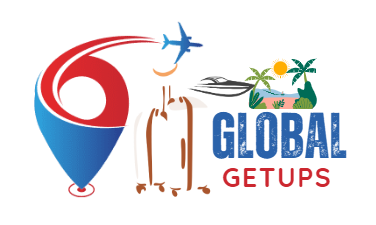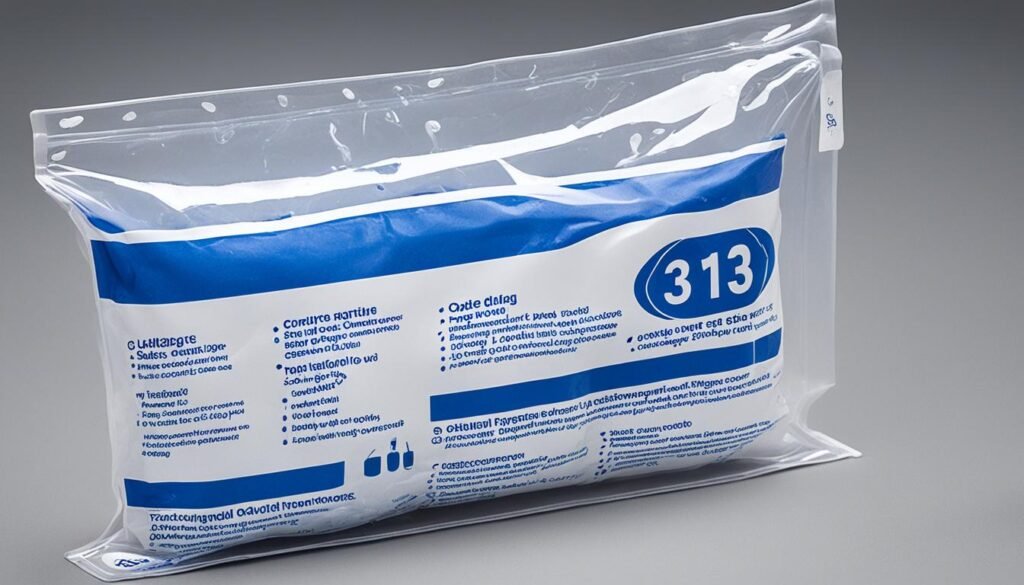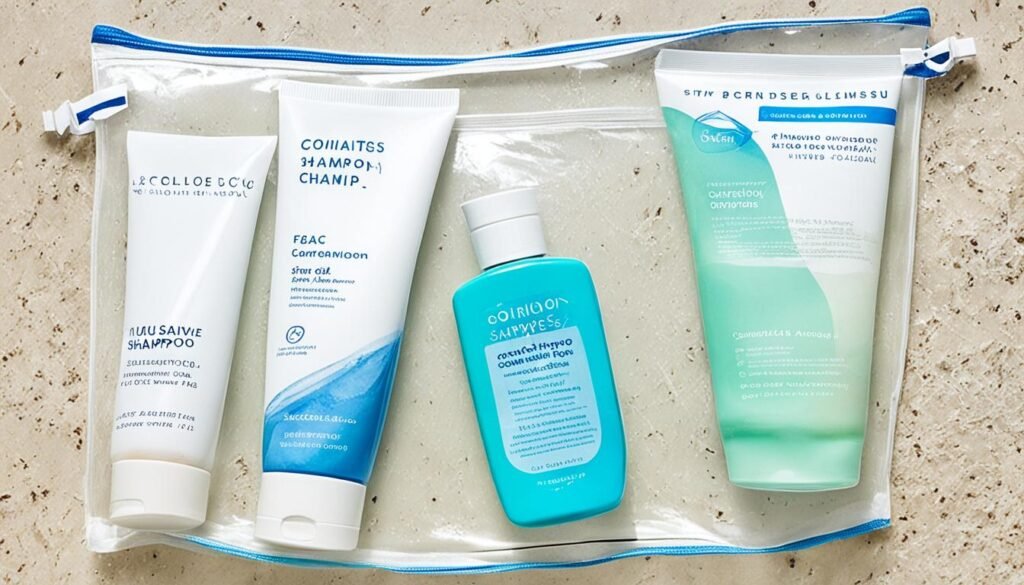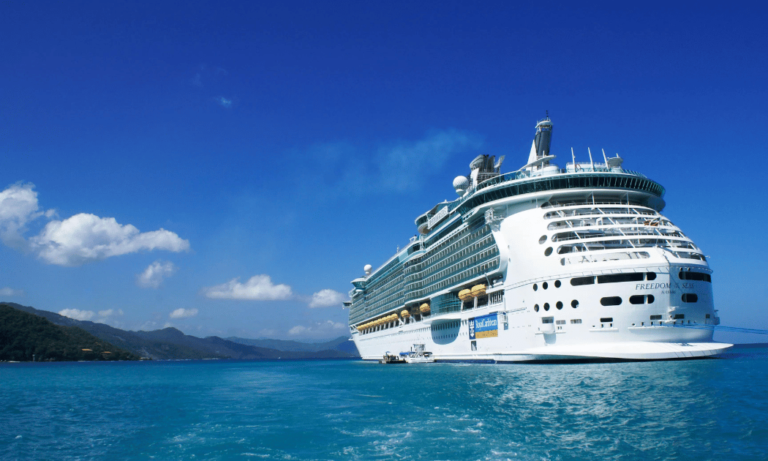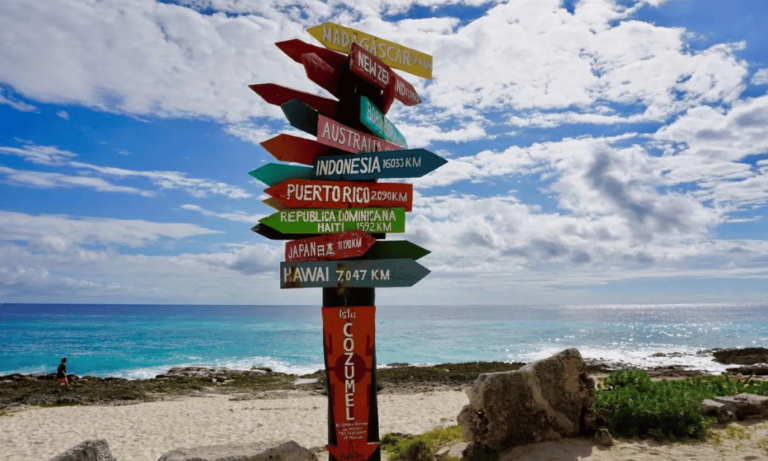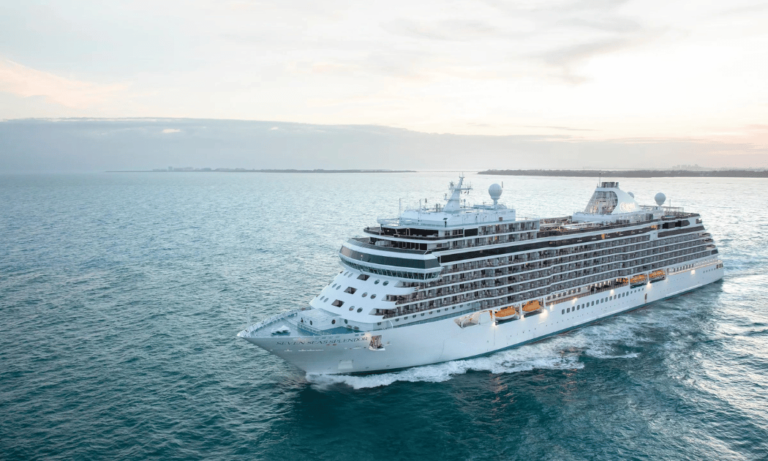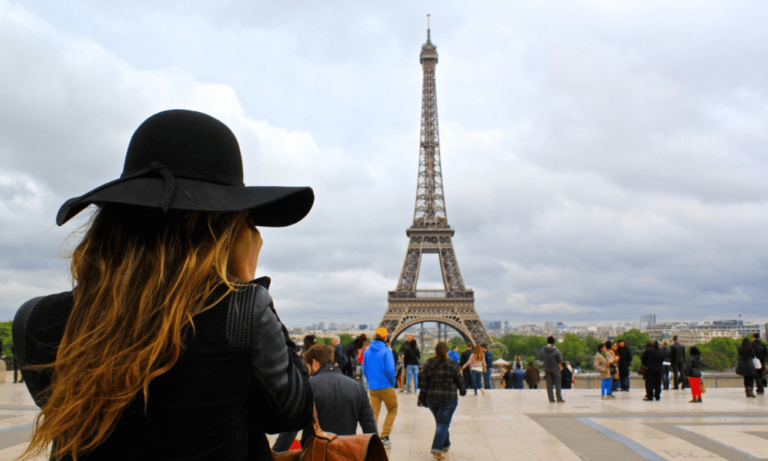Going through airport security can be tough, especially with carry-on liquids. In September 2006, the TSA introduced the 3-1-1 rule. This rule makes going through security easier and safer for everyone. Knowing the 3-1-1 rule helps you move quickly and easily through airport security.
The 3-1-1 rule is easy to remember and follows TSA’s carry-on liquid rules. It means your liquids can’t be bigger than 3.4 ounces or 100 milliliters. You must put all liquids in one clear, quart-sized, resealable bag, and you can only have one bag per person. Following these rules makes going through security less stressful.
Key Takeaways
- The 3-1-1 rule applies to liquids, gels, and aerosols in carry-on bags
- Each liquid container must be 3.4 ounces (100 milliliters) or smaller
- All liquid containers must fit into one clear, quart-sized, resealable bag
- Each passenger is allowed only one liquid bag
- Exceptions to the rule include medications, baby formula, and breast milk
Understanding the TSA’s 3 1 1 Rule
Traveling by air can be tough, especially with all the rules and security steps. One key rule is the TSA’s 3-1-1 rule for carry-on luggage. It tells us how to pack liquids, gels, and aerosols for airport security.
What is the 3 1 1 Rule?
The 3-1-1 rule is a set of TSA guidelines for carry-on liquids, gels, and aerosols. It means:
- Liquids, gels, and aerosols must be in containers of 3.4 ounces (100 milliliters) or less.
- Each passenger can have only one quart-sized, clear, resealable plastic bag for these items.
- Passengers can bring only one bag of liquids through security.
Remember, these rules only apply to carry-on luggage. You can pack more liquids in checked luggage.
Why the 3 1 1 Rule Was Implemented
The TSA brought in the 3-1-1 rule after a 2006 terrorist plot involving liquid explosives. It aims to make airport security better and easier. The rule limits liquids in carry-on bags to make screening quicker and safer.
This rule helps TSA officers check items easily and spot threats. It might be a bit of a hassle, but it’s key for keeping air travel safe.
The 3-1-1 rule is for the U.S. only; other countries have their own rules for carry-on liquids.
Always check the rules for your destination before packing. Knowing the TSA’s 3-1-1 rule makes going through airport security easier and less stressful.
Liquids, Gels, and Aerosols Covered by the 3 1 1 Rule
The TSA’s 3-1-1 rule covers many liquid items, gels, creams, pastes, aerosols, and goods you can eat. Toiletries like toothpaste, shampoo, and lotion must follow this rule in carry-on bags. All liquids in carry-on bags must be in containers of 3.4 ounces (100 milliliters) or less.
Passengers can bring one clear quart-size bag with their liquids. This rule helps make security checks faster and keeps all liquids safe. By following the 3-1-1 rule, travelers can pack their essentials without worrying about security.
When packing liquids, gels, and aerosols, think about the containers. Travel-size containers are perfect for these items and meet TSA size rules. You can find these containers at most drugstores, supermarkets, and online.
The 3-1-1 rule also applies to foods like salsa, honey, and peanut butter. These must be in containers of 3.4 ounces or less in one clear quart-size bag. If you need more, pack them in checked luggage or buy them where you’re going.
| Item Type | Examples | Container Size |
|---|---|---|
| Liquids | Water, juice, soup, syrup, perfume | 3.4 ounces (100 milliliters) or less per item |
| Gels | Hair gel, toothpaste, hand sanitizer | 3.4 ounces (100 milliliters) or less per item |
| Aerosols | Hairspray, shaving cream, spray deodorant | 3.4 ounces (100 milliliters) or less per item |
| Creams | Lotion, sunscreen, moisturizer | 3.4 ounces (100 milliliters) or less per item |
| Pastes | Toothpaste, ointments, gel insoles | 3.4 ounces (100 milliliters) or less per item |
Knowing what items the 3-1-1 rule covers and the right container sizes helps travelers. This way, they can go through security smoothly and won’t have to worry about their items.
The TSA’s 3-1-1 rule is designed to enhance airport security while allowing passengers to bring essential liquid items, gels, and aerosols in their carry-on luggage.
Following these guidelines and packing your items right lets travelers start their trips worry-free. They’ll know they’re meeting TSA rules.
How to Pack Your Carry-On Liquids According to the 3 1 1 Rule
Following the TSA’s 3 1 1 rule for packing liquids in your carry-on is easy with some prep. This rule helps you pass through the TSA checkpoint smoothly and keeps your personal care items safe. Learn more about streamlining your travel with the 3 1 1 rule.
Choosing the Right Containers
It’s key to use travel containers that meet the TSA’s size limits for liquids in your carry-on. Each container should hold no more than 3.4 ounces (100 milliliters) of liquid, gel, or aerosol. Look for TSA-approved, leak-proof containers made for air travel at drugstores, supermarkets, and online.
As of 2023, the TSA allows passengers to carry up to 3.4 ounces of liquids in 1-quart-sized bags, per the 3 1 1 rule.
Using a Quart-Sized, Clear, Resealable Bag
Put your liquids in travel containers and then into a single, quart-sized, clear plastic bag, like a Ziploc. This bag must be sealed and opened again for inspection. Remember, each passenger can only have one liquids bag in their carry-on.
Here are some tips for your clear plastic bag:
- Choose a strong, quality bag that won’t tear or get punctured
- Make sure the bag is fully sealed to avoid leaks
- Put the bag in an easy spot in your carry-on for quick screening
| Liquid Item | Maximum Container Size | Quantity Allowed |
|---|---|---|
| Toiletries (shampoo, lotion, etc.) | 3.4 ounces (100 milliliters) | 1 quart-sized bag per passenger |
| Hand Sanitizer | 12 ounces (350 milliliters) | 1 per passenger, until further notice |
| Alcoholic Beverages (24-70% alcohol) | 3.4 ounces (100 milliliters) | 1 quart-sized bag per passenger |
Removing Your Liquids Bag for Screening
At the TSA checkpoint, take out your quart-sized liquids bag and put it in a bin for X-ray. This lets TSA officers check your bag easily without extra searching. It makes the screening process faster for everyone.
By packing your liquids right and following the 3 1 1 rule, you can make going through the TSA checkpoint easy and stress-free.
Exceptions to the 3 1 1 Rule
The 3 1 1 rule is strict for most liquids in carry-on luggage. But, the TSA knows some items are vital for travelers’ health. So, they have special rules for liquid medications, baby formula, and breast milk.
Medications
If you need liquid medication, you can bring it on the plane, even if it’s more than 3.4 ounces. This includes:
- Prescription and over-the-counter liquid medications
- Insulin and other essential liquids for diabetic care
- Contact lens solutions
- Medically needed hot or cold packs
- Liquid vitamins and supplements
Tell TSA officers about any liquids you need for health reasons. Keep these items separate from the rest of your stuff. It’s smart to have a doctor’s note or prescription label ready to prove you need these liquids.
Baby Formula and Breast Milk
Baby formula and breast milk are also exempt from the 3 1 1 rule. Parents can bring more than 3.4 ounces of these items. You can also bring things like:
- Juice for toddlers
- Ice packs and freezer packs to keep things cool
- Liquid teethers
- Baby food in liquid form
Tell TSA officers if you’re carrying baby formula, breast milk, or related items. They might need to check these items more closely. But, the TSA says their checks won’t harm or ruin these important liquids. If you’re worried, you can ask for other ways to check your items.
Even with these special rules, it’s important to talk with TSA officers. Let them do their checks to keep everyone safe.
The 3 1 1 Rule and TSA PreCheck
The TSA’s 3-1-1 rule is for all passengers, but TSA PreCheck members get faster screening at over 200 U.S. airports. This program is for low-risk travelers and speeds up security checks. Most people wait less than 10 minutes.
To join TSA PreCheck, go to one of the 620+ places to sign up. The online fee is $70, but it’s $78 if you go in person. You can also use CLEAR for $77.95, with cheaper renewal options. Many travel cards pay for TSA PreCheck fees.
Even with TSA PreCheck, you still follow the 3-1-1 rule for liquids. But, TSA PreCheck doesn’t always mean you skip the long lines. Kids under 17 can go through with an adult who has TSA PreCheck if it’s on their pass.
| TSA PreCheck Provider | Enrollment Fee | Online Renewal Fee | In-Person Renewal Fee |
|---|---|---|---|
| IDEMIA | $85 | $70 (through Telos) | $78 |
| CLEAR | $77.95 | $68.95 | $77.95 |
The U.S. still follows the 3-1-1 rule, but the U.K. will change its rules by June 2024. All U.K. airports will use advanced scanners, so you won’t have to take out big devices or liquids. London City Airport has already started this, and London Gatwick is testing it too.
The TSA is also adding more CT scanners in the U.S., but won’t change the liquids rule now. It might take five to seven years to change the 3-1-1 rule in the U.S. This is because planning and coordination are needed across many airports.
Tips for Streamlining Your Travel with the 3 1 1 Rule
When it comes to streamlining your travel experience, a little preparation goes a long way. By following these packing tips and travel hacks, you can breeze through airport security and focus on enjoying your trip.
Invest in Travel-Sized Containers
One of the easiest ways to follow the 3-1-1 rule is to get reusable travel-sized containers. These containers are under the 3.4-ounce limit and are great for your favorite toiletries. You won’t need to buy travel-sized products or use hotel toiletries.
When picking travel-sized containers, think about these things:
- Choose leak-proof containers to avoid spills in your luggage
- Opt for containers with wide openings for easy filling and cleaning
- Look for containers made from durable materials like silicone or BPA-free plastic
Consider Purchasing Liquids at Your Destination
Buying liquids at your destination can also simplify your travel. This way, you don’t need to pack them, skipping the 3-1-1 rule. It’s a good idea for things like shampoo, conditioner, or sunscreen.
Think about these points when deciding what to buy at your destination:
- Check if your favorite brands or alternatives are available
- Compare buying these items at your destination versus packing them
- Think about the environmental impact of single-use toiletries versus reusable containers
Pack Your Liquids Bag in an Easily Accessible Location
Put your quart-sized liquids bag in an easy spot in your carry-on. This makes going through TSA screening faster and easier. You won’t have to search for your liquids.
Here are some packing tips to consider:
| Packing Strategy | Benefit |
|---|---|
| Place your liquids bag in an exterior pocket of your carry-on | Allows for quick and easy access during screening |
| Pack your liquids bag near the top of your carry-on | Reduces the need to rummage through your luggage |
| Use a clear, quart-sized bag for your liquids | Makes it easy for TSA agents to see the contents and speeds up the screening process |
By using these packing tips and travel hacks, you can make your travel smoother and follow the 3-1-1 rule easily.
A bit of preparation and organization can make your travel more enjoyable and stress-free.
Common Mistakes to Avoid When Following the 3 1 1 Rule
The TSA’s 3-1-1 rule helps make security checks easier and follows TSA rules. But, travelers often make mistakes that cause delays and lead to items being taken away. Here are some mistakes to avoid with the 3-1-1 rule:
- Exceeding the 3.4-ounce limit: A big mistake is using containers over 3.4 ounces (100ml) for liquids, even if they’re not full. It’s the container size, not how much liquid is in it, that matters.
- Forgetting the quart-sized bag: Another mistake is not putting liquids in a clear, quart-sized bag. This bag must be taken out of your carry-on and scanned separately.
- Packing prohibited items: Some people pack things they shouldn’t, like too much alcohol (over 140 proof), cooking fuel, or self-defense sprays. If TSA finds these, they’ll take them.
- Check your liquids’ sizes to make sure they’re 3.4 ounces (100ml) or less.
- Have your quart-sized liquids bag ready to take out for screening.
- Look at the TSA’s list of banned items before packing to avoid bringing something you shouldn’t.
“In August 2021, 96% of TSA PreCheck travelers waited five minutes or less to be screened, showing how important it is to pack right and follow TSA rules for quick security checks.”
By watching out for these common mistakes and following the 3-1-1 rule, you can avoid delays and have a smoother trip.
Alternatives to Carrying Liquids in Your Carry-On
If you want to make traveling easier and skip the 3-1-1 rule, try these packing tips. Use solid toiletries and non-liquid items to make your carry-on lighter and security checks quicker.
Solid Toiletries
Switching to solid toiletries helps you avoid the liquid rules. Use bar soap, solid shampoo and conditioner bars, and powder makeup instead of liquids. Other solid alternatives include:
- Solid deodorant sticks
- Toothpaste tablets
- Solid perfume or cologne
- Lotion bars
- Solid sunscreen sticks
These solid toiletries are great because they last longer and make less waste than liquids.
Checked Luggage for Larger Liquid Items
If you need big liquid items, put them in your checked luggage. This way, you can carry full-sized liquids without TSA issues. Consider packing these items in your checked bag:
- Large bottles of shampoo and conditioner
- Full-size containers of lotion or sunscreen
- Hair styling products
- Liquid makeup removers
- Mouthwash
Remember to put liquids in a sealed plastic bag in your checked luggage to avoid leaks and protect your stuff.
Using solid toiletries in your carry-on and liquids in your checked luggage makes travel easier. It also helps you follow TSA rules and keep your personal care routine.
International Travel and the 3 1 1 Rule
When you’re flying to another country, you need to know about the liquid rules at foreign airports. The US has a 3-1-1 rule for carry-on bags, but other places might have different rules. Most countries let you bring a total of 100 milliliters of liquids in one container. The European Union and Canada allow up to one liter of liquids in your carry-on.
Before you pack for your trip, check the liquid rules of your destination. Some places have stricter rules or bans on certain items. Knowing these rules can save you from trouble at security checks in foreign airports.
Duty-free purchases at airports have some special rules. Liquids bought at these shops can go in your carry-on if they’re in a sealed bag from the store. These bags are clear and have a receipt to prove you bought them recently. But, remember, these liquids might still get checked at your destination airport.
“I always make sure to check the liquid restrictions of my destination country before an international trip. It helps me pack smarter and avoid any surprises at foreign airport security.” – Sarah, frequent international traveler
Here are some tips for flying internationally with liquids:
- Check the liquid rules of your destination before you pack
- Put liquids in your checked luggage if you can to avoid carry-on limits
- Keep duty-free items in their original bags for inspection at your destination
- Be aware of any special rules on what you can’t bring
Knowing about international liquid rules and being careful can make flying abroad easier and less stressful.
| Country/Region | Carry-On Liquid Limit per Container | Total Carry-On Liquid Allowance |
|---|---|---|
| United States | 3.4 ounces (100 milliliters) | One quart-sized bag per passenger |
| European Union | 3.4 ounces (100 milliliters) | One liter-sized bag per passenger |
| Canada | 3.4 ounces (100 milliliters) | One liter-sized bag per passenger |
| Australia | 3.4 ounces (100 milliliters) | One liter-sized bag per passenger |
The Future of the 3 1 1 Rule
The TSA might change the 3 1 1 rule as security tech gets better. This could make flying easier and better for everyone. Already, some airports are testing new ways to check liquids, which could let you keep your bags and electronics with you.
In the UK, the government wanted to let people carry more liquids with new scanners. But, some big airports like Heathrow and Gatwick didn’t get the scanners fast. So, they went back to the old 100ml rule, causing long lines and confusion.
New CT scanners could end the 100ml rule by using 3D images and smart algorithms. This tech could make going through security faster and easier. Already, some airports in Europe like Rome and Milano have these scanners, with plans for more in Spain, Germany, and elsewhere.
These scanners will help get rid of the 100ml rule in the next two years. But, not all airports have them yet. So, it’s important to check the latest rules before you fly. Globalgetups.com has tips to help you navigate these changes smoothly.
| Airport | New Technology | Impact on Liquid Rules |
|---|---|---|
| Amsterdam Schiphol | CT scanners | Relaxed liquid rules |
| London City | CT scanners | Scrapped 3-1-1 rule |
| Shannon | CT scanners | Adopting new regulations |
| Madrid | 3D scanners | Phasing out 100ml rule |
| Barcelona | 3D scanners | Phasing out 100ml rule |
As airports get better tech, the 3 1 1 rule and liquid limits might change. These updates aim to make flying safer and easier. They could make air travel more convenient and efficient for everyone.
Conclusion
The TSA’s 3-1-1 liquids rule is key to airport security. It keeps passengers and crew safe. By following the TSA’s guidelines, travelers can pack easily and move quickly through security.
Choosing the right containers and packing smart helps. Use clear, quart-sized bags for your liquids. This makes screening easier.
The 3-1-1 rule might seem strict, but it’s vital. It stops threats like the 2006 liquid explosives plot. By limiting liquids, the TSA lowers the risk of dangerous items in planes.
Think about using solid toiletries or travel-sized items for your next flight. If unsure, check the TSA’s website or call your airline. They can give you the latest on carry-on rules and TSA compliance.
Understanding and following the 3-1-1 liquids rule is key to easy airport security. With some planning and attention, you can pack well, pass through security fast, and start your trip with confidence.
